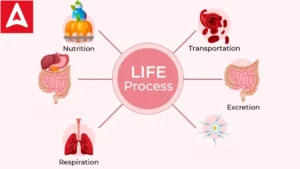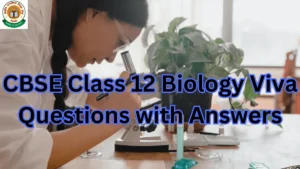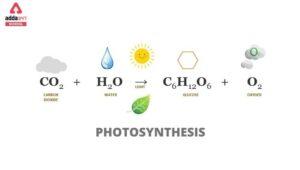Table of Contents
Who Discovered Cell: We currently have a much better understanding of living things thanks to the discovery of cells and the cell theory, which is regarded as a turning point in biology. Although researchers in the 17th century had found cells, it wasn’t until two centuries later that they comprehended that all life forms were composed of these basic constituents.
Who Discovered Cell?
In this article, we will tell you about Who Discovered Cell? The history of the cell’s discovery, the scientists who observed and studied it and the evolution of the cell theory will all be covered in this article.
So, let’s start-
Who Discovered Cell and How?
Robert Hooke, a British scientist, first used the word “cells” in 1665. He asserts that cells are the fundamental structural and functional components of life. The first person to study and examine living things under a microscope while looking at a cork slice was Robert Hooke.
He noticed a structure that resembled a honeycomb and gave the components of the structure the name “cells.” Since then, the study of cells has advanced. Numerous scientists, including Louis Pasteur, etc., kept making advances in science.
Without improvements to the microscope, the discovery of the cell would not have been possible. Scientist Robert Hooke improved the design of the preexisting compound microscope in 1665 because he was eager to learn more about the microscopic world. Three lenses and a stage light were used in his microscope to enlarge and illuminate the specimens.
Who Discovered Cell Theory?
The discovery of cells marked a significant advancement in the study of life. Let’s look at a detailed explanation of how cells were discovered, who made the discovery, and how.
Antony Van Leuwenhoek created his own microscope lenses in the year 1670. He was the first scientist of his era to examine human cells, bacteria, and protozoa under a microscope. Light microscopes were insufficient for a thorough examination of the cells. Consequently, electron microscopes quickly became a reality.
By significantly enhancing the magnifying power of microscope lenses, Leeuwenhoek was able to distinguish the single-celled organisms that lived in a drop of pond water. These organisms were given the name “animalcules,” which stands for “miniature animals.”
Advances in science and microscope technology during the 1700s led to a number of scientific breakthroughs at the start of the 1800s. In 1804 Karl Rudolph and J.H.F. Links demonstrated for the first time that cells were autonomous and had their own cell walls.
It was previously believed that cells divided their walls in such a way that fluids moved between them. In 1833, British botanist Robert Brown made the next insignificant discovery when he accidentally discovered the nucleus inside plant cells.
Theodor Schwann discovered that cells also made up all animal tissues. Both claims were combined by Schwann into a single theory that claimed that- Cells are the basic unit of all living things and “the cell is the fundamental structural and functional unit of all living things.”
Carl Heinrich Braun, a scientist, reread the cell theory in 1845 after realizing that cells are the basic building block of life. Rudolf Virchow introduced the next piece of the original cell theory in 1855 when he stated that “Omnis cellules- e- cellula,” which roughly translates from Latin to “cells only arise from other cells,” was true.
The current explanation of the cell theory incorporates a variety of fresh ideologies that mimic the knowledge that has grown since the mid-1800s. These include the knowledge that dynamism moves between cells, genetic material is passed from one cell to another, and cells are made of the same basic living components.
Who Discovered Cell and Importance of The Discovery of The Cell
The discovery of the cell has proved to be one of the most important discoveries in the history of biology. Robert Hooke was the first to use the term “cell” after studying cork under a microscope, though many scientists have made contributions to our understanding of cells.
Our understanding of cells and their significance in biological processes has since been further enhanced by the work of Antonie van Leeuwenhoek and Matthias Jakob Schleiden. Today, cell biology is still a rapidly developing field, with daily new findings deepening our understanding of this essential component of life.
Common Structures of All Cells
Despite their diversity, all cells share some components. A cell is made up of many components, some important components are- DNA, cytoplasm, ribosomes, and a plasma membrane
- The framework and pillars of an organism’s body are provided by its cells. The interior of the cell is divided into various organelles that are each surrounded by a distinct membrane.
- The genetic material required for cell growth and reproduction is stored in the nucleus, a major organelle. Each cell has a single nucleus and cytoplasmic organelles that are membrane-bound.
- The primary organelle with two membranes surrounding it, the mitochondria, is in charge of the energy exchanges necessary for the survival of the cell. In the cell, waste materials are broken down by lysosomes.
- By synthesizing specific molecules and processing, guiding, and sorting them to their proper locations, the endoplasmic reticulum contributes significantly to the internal organization of the cell.
Classification of Cells
Similar to factories, cells have various departments and employees who all work towards a single goal. Different cell types have various functions. There are two different types of cells based on cellular structure:
- Prokaryotic cells have a long evolutionary history. They arrived first and were the only form of life for many billions of years. Prokaryotic cells make up the majority of life today, and they are incredibly successful. Prokaryotic organisms include all bacteria and archaea that resemble bacteria.
- Eukaryotes are multicellular or single-celled organisms. Eukaryotic cells are more complex than their prokaryotic ancestors because of this evolution. Eukaryotic cells make up the majority of the living things we are accustomed to, including animals, plants, fungi, and protists. Eukaryotic cells are complex and large (between 10 and 100 m).
The Discovery of Stem Cells
Stem cells were first discovered by Martin Evans and Matt Kauffman. In the year 1981, they isolated and cultured the stem cells from mouse embryos from a blastocyst in addition to identifying them.
These structural components of the human body could be produced thanks to James Thomson and his collaborators. This finding created new therapeutic and transplantation options that were previously unthinkable.






 Life Processes: Check Nutrition, Transpo...
Life Processes: Check Nutrition, Transpo...
 CBSE Class 12 Biology Viva Questions wit...
CBSE Class 12 Biology Viva Questions wit...
 Photosynthesis: Equation, Reaction, Diag...
Photosynthesis: Equation, Reaction, Diag...










